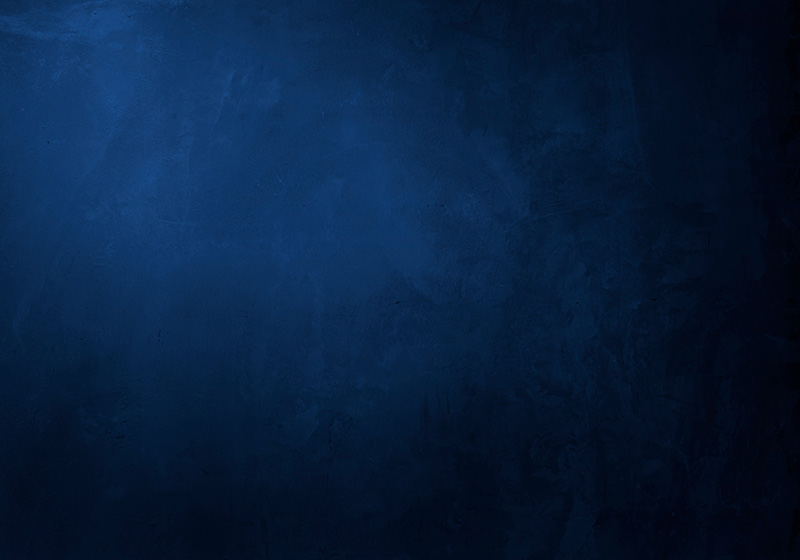Table of Contents
When, in the mid-eighteenth century, officers in the UK’s Royal Navy buttoned up their blue uniforms for the first time, none of them could have imagined what lay in store for this new colour. Today, navy blue is everywhere: a universal symbol of style and authority.
This is particularly true in the world of fashion, where it is difficult to avoid running into navy clothing: from Giorgio Armani to Bob Dylan, countless stars have been immortalised in iconic navy blue garments.
But why is it called navy blue? And did you know that the plant from which it is extracted – indigo – caused quite a stir when it was first imported to Europe? Today we’d like to tell you everything we know about navy blue, the colour of chic!

What colour is navy blue?
Navy blue is a very dark blue, approaching inky black.
This deep and contemporary hue is very aristocratic, elegant and also authoritative. Its frequencies transmit a feeling of calm to your brain, leading it to be used successfully in top-end furnishings.

Naturally, navy blue has its own Pantone code: 276C. For digital and online use, meanwhile, its HEX code is #000080.
The history of navy blue
The colour’s name betrays its origins. It all stems from a very special uniform: the royal uniform of a global power.
In 1749, the British Royal Navy decided to adopt a special dark-blue uniform. At the time, the Royal Navy was the pride of the British Empire – the largest empire of all time that included colonies, dominions and protectorates across all the world’s oceans.
Perhaps partly due to the Navy’s prestige, the new colour was incredibly successful. In the decades that followed, the navies and armies of many other countries started to adopt navy blue uniforms too.

A uniform issued to the Royal Navy in the late eighteenth century. Image: rmg.co.uk
However, the term ‘navy blue’ only entered common parlance almost a century later. The first written reference to the now legendary hue dates from 1840.
The controversial Indian plant needed for navy blue
The officers’ choice of this colour was no coincidence. It is extracted from a plant native to India – Indigofera tinctoria – and has an extremely handy characteristic: it is extremely resistant to both the sun and sea water. The dye extracted from the plant is, of course, indigo.
The plant had been imported to Europe since the late mediaeval period, but the prices were extortionate, meaning people opted for other cheaper but less effective dyes to create blue. It was only when the British Empire colonised India that this raw material became abundant and affordable – for the British, at least!

In the eighteenth century, the UK’s choice of this colour for the fleet must have seemed not only pioneering, but also symbolic of British power over land and sea.
When a new colour causes a stir
The appearance on the market of indigo and new, more durable dyes that could now be produced at a low cost ended up creating tensions between producers and traders.
For example, growers of woad – another plant used at the time to create the colour blue – had launched a fierce campaign against the new dye back in the seventeenth century, calling it “the devil’s colour“. The strong protests were quite successful to begin with, and some countries even decided to ban it.
But indigo’s effectiveness as a dye for a range of fabrics – from wool to the famous uniforms – saw it win out in the end, and it slowly became the most commonly used dye in the textile world.
Navy blue in pop culture: from passports to stars
No sooner had it appeared on board military vessels, navy blue came to symbolise elegance and began spreading into other areas of daily life and pop culture.
For instance, Giorgio Armani often wears navy garments of all types – from T-shirts to eye-wateringly expensive suits. And he’s not the only one. Another star photographed in iconic navy garments is Bob Dylan, with his, you guessed it, uniform-style jacket. The same goes for sports clubs like the American football team the Dallas Cowboys, which has brought navy blue kit back into vogue – the fans can’t get enough of it!

But let’s go back to the British, who effectively invented the colour and gave it the iconic status it has today. Guess what colour we chose for the cover of our passport in 1921? That’s right, navy blue! We gave it up (perhaps reluctantly) when we joined the European Union, so our passport matched the other EU countries. However, in 2020, Brexit provided an opportunity to return to the original colour.
In the worlds of fashion and pop, navy blue has never gone away and it most likely never will. There is certainly no doubt at all that it should be considered a classic. Every so often it comes back into fashion: in the early 2000s it was considered the new black, while in 2021 some people suggested that navy blue was the true colour of the year.
In short, navy always works with everything – despite the famous rule that you should never wear blue and black together, some people actually advise pairing them for even greater elegance.
So, are you ready to use navy blue in your next project?

